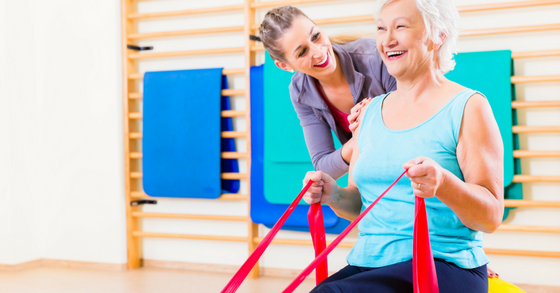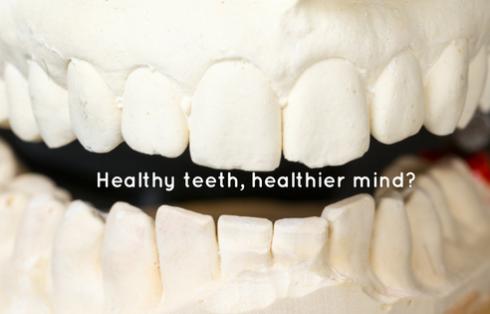Maintain muscle strength and avoid frailty
“Is this normal?”
As a Care Advisor to many seniors, I am asked this question a lot. After all, most of us are loathe to face what we perceive as the inevitable physical changes that come with aging, and we spend lots of time and money trying to curb the effects of time on our aging bodies. Yet even as we are urged to keep buying the products and services that promise to stave off wrinkles and increase our energy, we do seem to endorse the idea that perhaps our hearing is going to go, our joints will become arthritic, or our eyes will grow cataracts as the moments tick by. So we are often caught in a state of confusion about just how much change is normal, and what kinds of changes signal the onset of a serious or life-threatening condition.
There is one insidious and under-recognized change associated with aging, however, that many people consider to be inevitable, which might be the very physical issue that has the potential to set us on a course toward progressive decline, loss of function and loss of independence: reduced muscle tone and strength. Sure, we tend to just accept that we will just not be able to run as fast as we did in our 20s, or be able to bench press 145 lbs. We get up in the morning with some aches and pains. . . and what we chalk up to stiffness. And that is just . . . well, part of getting older, isn’t it?
Does everyone lose muscle mass?
Generally, yes.
Gradual loss of muscle mass is a naturally occurring process associated with aging, and it happens to everyone. This is known as sarcopenia. There are physiologic changes that cause this, and these changes occur for a variety of different reasons. But not all sarcopenia is created equal. Some people maintain enough muscle mass and the strength they need to remain active and independent into their senior years, while others lose muscle mass and strength at a faster rate. We all know physically fit and active people in their 90s, and might also see others who seem much older in their 70s.
Up until about age 30, the body is typically in a state of muscle building. Thereafter, most people begin to lose a percentage of muscle mass at a rate of 3-8% per year. After about age 50, the process accelerates, with a possible 30-50% decline in muscle mass occurring between 40 and 80 years of age. The loss of muscle mass may not be as apparent in middle age, as decline in muscle tissue is often offset by gain in fat tissue (especially in the midsection) due to hormonal shifts. It is estimated that over 50% of older adults in their 80s suffer from sarcopenia.
Why do we lose muscle mass as we get older?
We lose muscle mass as we age for a variety of reasons.
Many studies have been done on different aspects of muscle loss, but the one thing experts can agree on is that muscle loss is due to a combination of complex interrelated system changes within the aging body.
The muscle building pathways are affected when we age. For example, research has demonstrated that a major contributor to sarcopenia in aging is that the body’s muscle building pathway is less sensitive and less responsive to ingestion of essential amino acids, which are the building blocks of proteins which are essential to the maintenance of muscle tissue. Other research has focused on the reduction in the number of motor units in aging skeletal muscle, and others have directed attention to hormonal changes that affect muscle building processes in the body. Anabolic, or “building”, hormones such as testosterone and growth hormone are known to decline in aging, and such declines in these hormones and others have also been linked to declines in muscle mass and strength. Hopefully new research will reveal ways to interrupt or prevent the progression of muscle loss and strength that leads to undesirable outcomes for older adults.
Lifestyle. A person’s pattern of living can also influence the degree to which a person experiences muscle loss and loss of strength. Of course, as we might predict, inactivity and a sedentary lifestyle would contribute to muscle loss and decline in muscle strength over time. However, dietary intake and exposure to other environmental factors may also contribute to the overall problem. Most adults take in less calories as they get older, and those calories may be comprised of even less protein which contributes to muscle loss.
What amount of muscle loss is considered “normal”?
Surprisingly, there has been a lack of consensus in scientific circles over exactly what amount of muscle loss in aging is “normal” and what amount of muscle loss should be considered something for which we should seek some sort of clinical intervention. New efforts to quantify muscle loss and find reliable ways to measure it are under way. Only with a standardized approach and specific diagnostic criteria can researches develop a body of credible data on which treatment recommendations can be based.
The international scientific community has recognized that more and more people will face the adverse outcomes associated with loss of muscle mass with aging, and has recently proposed that new standards be set forth so clinicians can make recommendations and provide treatment to prevent or slow down the progression of sarcopenia.
- Foundation for the National Institutes of Health (FNIH) Sarcopenia Project
- European Working Group on Sarcopenia in Older People (EWGSOP)
- International Working Group on Sarcopenia
Through the FNIH sarcopenia project, these groups have focused their efforts on establishing standards for measurement of muscle mass and function.
Should I be concerned about sarcopenia if it is a natural part of the aging process?
Yes, and here is why:
Adverse health outcomes are associated with sarcopenia. Loss of muscle mass and strength has been associated with many adverse health outcomes in older adults. Specifically, declining muscle mass in older adults has been associated with:
- Decline in independence and mobility
- Reduced ability to handle the stress of an injury or other major health event
- Increased risk of Type II diabetes
- Diminished quality of life
- Increased risk of falls and poor health outcomes
- Increased risk of disability
- Increased risk of hospitalizations
- Increased risk for fractures due to comorbidity of osteoporosis and lower bone mineral density (FN: Creating Diagnostic Criteria)
- Increased health costs
- The prediction of earlier mortality
Are there things I can do to prevent or slow down the muscle loss associated with aging?
One review of 17 studies on exercise and dietary supplementation in muscle loss and aging revealed that there is little consensus regarding how much exercise or dietary supplement and it will combinations is necessary to result in the best benefits for older adults.
Thus, although there is a lack of consistent data on which to provide recommendations that are evidence-based, there are some general principles that do emerge. It is generally widely accepted that resistance training and increasing dietary protein are both beneficial approaches to correcting muscle loss in older adults. It’s just the specifics now that need to be hammered out by the research and medical communities.
In the meantime, pursuing good exercise and nutrition habits in general is likely to be helpful in spite of a general lack of consensus on specifics:
- Exercise. The great panacea. We all know this by now, right?
- Resistance training. This means working with weights (even your own body weight is often sufficient,) and bands to provide resistance to the muscle groups.
- Strength training. This means the goal is to increase the amount of weight your muscle groups can move over time.
- Increase dietary intake of protein: Current recommendations have been shown to be inadequate to maintain or contribute to muscle building. New recommendations suggest that optimal protein intake for older adults should be 1.0 to 1.2 g/kg of body weight per day.
Dr. Deborah Gordon recommends an interval training program and describes her views on sarcopenia here. The bottom line is to keep moving, and be sure that the moving involves some resistance to the muscles moving through space. Check with your doctor before engaging in any kind of exercise and get recommendations that are uniquely suited to you.



